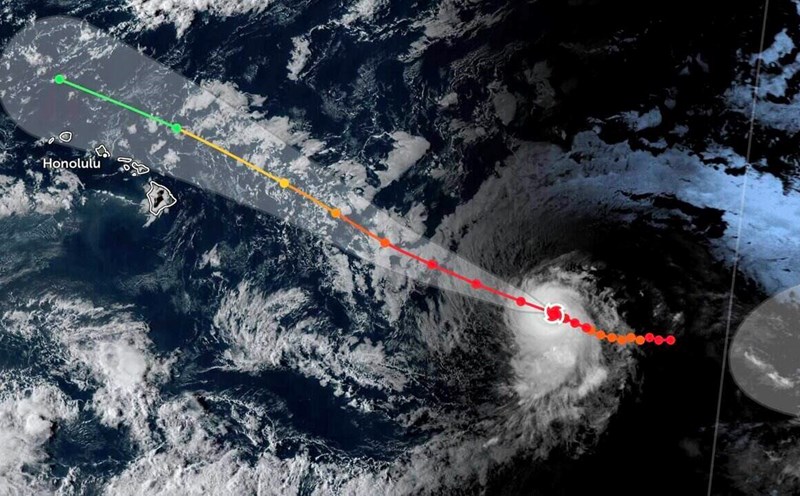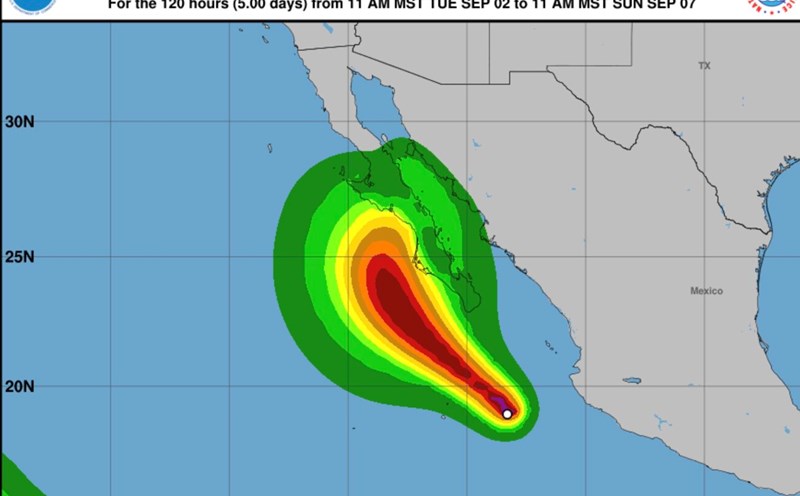The latest storm news on the morning of September 7 from the US National Weather Service (NWS) said that Hurricane Kiko is moving north of the Hawaiian Islands, reducing the risk of strong winds and widespread heavy rain.
On September 6, Kiko was about 1,609km southeast of Hilo on Hawaii's Big Island and is expected to approach the state early to mid-next week. The maximum sustained wind speed of Kiko is 215 km/h.
Kiko will strengthen into a Category 4 hurricane from September 6 and is forecast to gradually weaken in the coming days. Kiko reached Category 4 strength on September 3.
The National Weather Service previously said that Kiko will reach the Big Island and Maui on September 7, peaking along the eastern part of the Hawaiian Islands from late on September 8 to midweek.
As the seawaters around Hawaii cooler, Kiko is expected to weaken to a Category 2 and Category 1 hurricane, then a tropical storm before making landfall on Long Island.
On September 5, Acting Governor of Hawaii Sylvia Luke declared a state of emergency to prepare for severe weather conditions caused by Typhoon Kiko.
The threat from the wind is gradually decreasing. As it moves north, the storm tends to make the winds lighter than normal on the islands. So if the current path of the storm remains the same, the winds will be quite light, and it could eventually be hot, hot and less windy," said Joseph Clark, akm at NWS in Honolulu.
Expert Joseph Clark said that scattered rain is forecast so Hawaii will avoid widespread heavy rain.
Hurricane Kiko is currently causing large waves expected to hit the Big Island and Maui. There is a risk of dangerous high waves along the east coast of the archipelago, with waves 3-4.5m high.
Meteorologists are quite confident about the Kiko's path to northern Hawaii, but forecaster Joseph Clark said the storm's path is likely to shift.
If Kiko moves south again, it will increase the likelihood of heavy rain, but if it moves north, the storm's threat will be reduced.
Kiko is the second typhoon of this year's typhoon season, lasting from June 1 to November 30. Hurricane Erin appeared last month in the Atlantic but did not make landfall.











